Rare Bedford PC van is collector’s star exhibit
Posted by Chris Graham on 30th October 2023
Mike Lawrence has been collecting old vehicles for years and one of his star exhibits is a rare Bedford PC van, as Bob Weir explains.
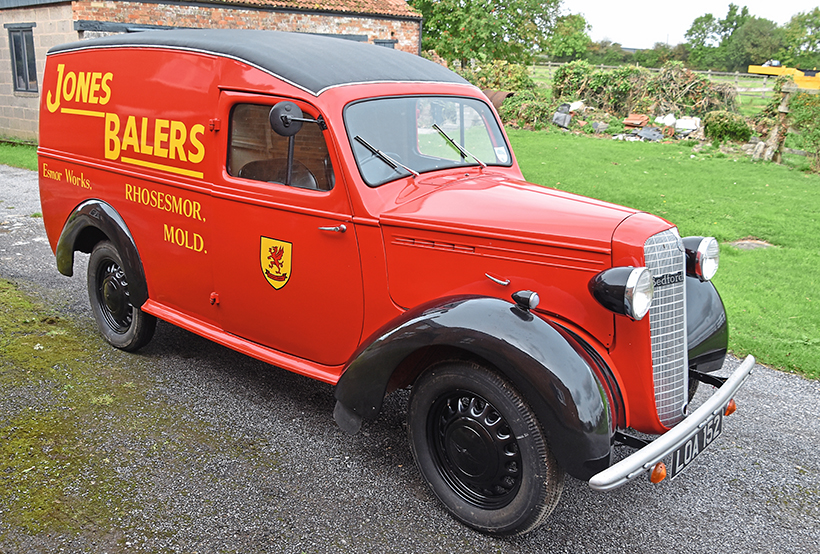
Mike’s Bedford PC van in its red livery; note the omission of a phone number.
Mike Lawrence’s background is in farming and heavy haulage. Before he took a well-earned retirement he ran his own transport company and specialised in moving unusual objects like the Flying Scotsman steam locomotive. “The family have lived on the same farm since 1901,” he explained. “I’ve seen some changes over the years, particularly with regards to commercial vehicles.”
Mike is the third generation of Lawrences to live on the farm, and in recent years has held agricultural working days to raise money for charity. Enthusiasts come from far and wide to see his veteran machinery in action, and the profits are all given to his four favourite charities, The Weston-Super-Mare Hospice, The Bristol Children’s Hospice, Macmillan Nurses and Dorset and Somerset Air Ambulance. “We co-operate with local tractor clubs on our working days and encourage people to come along and take part,” he explained. “We only use period items to make things as authentic as possible.”
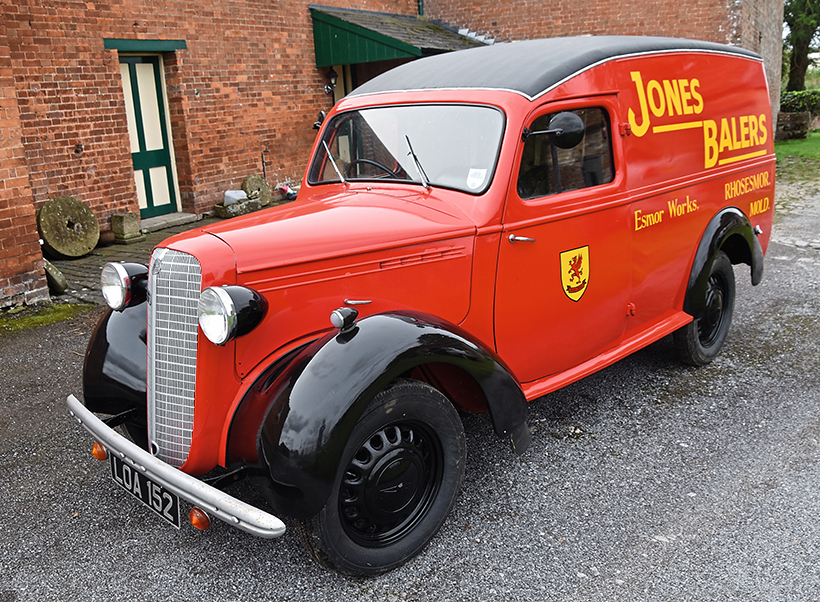
The PC was a transitional model between a pre-WW2 ‘box shape’ and post-war American-influenced bodywork.
Which is where Bedford LOA 152 comes in handy. The PC van is often seen working alongside the harvesters and balers, which adds to the 1950s atmosphere. “I am particularly interested in post-war agricultural equipment like balers, which are used at harvest time,” Mike said. “This technology was more common after the Second World War, as farming became increasingly mechanised.”
The Bedford PC was introduced in the late 1940s, as part of a new generation of light commercials. The van was the predecessor of the best-selling model CA, and the latest in a series of light commercials beginning with the 1938 model HC 5/6 cwt. This was followed by the larger JC 10-12 cwt van, which evolved into the model PC.
The PC’s design was based on the 1939 Vauxhall 12/4 light saloon, which appeared briefly after the Second World War. The front end of the vehicle was made from all steel, and the rear body was constructed of wood and steel panelling.
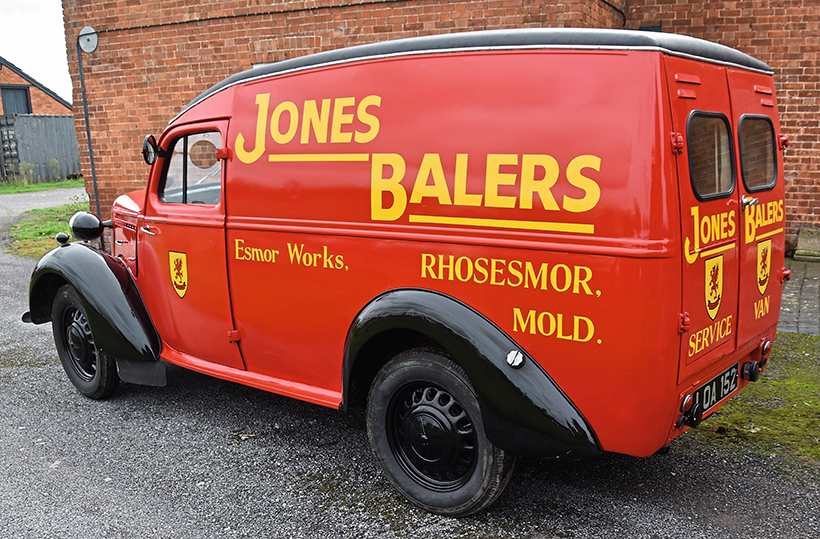
The van followed a trend with British manufacturers for using car components in their light commercial vehicles. The PC’s four cylinder 1,442cc engine was borrowed from Vauxhall’s L model Wyvern saloon. The Wyvern was one of Vauxhall’s first post-war models and its design was heavily influenced by the American market. Rated at 12hp, the engine could deliver 33bhp @ 3,400rpm.
The 10/12cwt PC was well-equipped by contemporary standards and the rear-wheel drive van was fitted with a three-speed column gearchange. Other features included Lockheed hydraulic brakes, 12-volt electronics, a Zenith 30VIG-5 carburettor, and 17in wheels.
According to contemporary reports, the PC could deliver a fuel consumption of 39.2mpg carrying a load of 1,232 lb, at an average speed of 28.8mph. The van measured 14ft 3in in length, 5ft 7.5in wide, and was used in a variety of formats. They were particularly popular with local councils, and the range included specialist versions like the ‘Utilavan’ ambulance and estate vehicle.
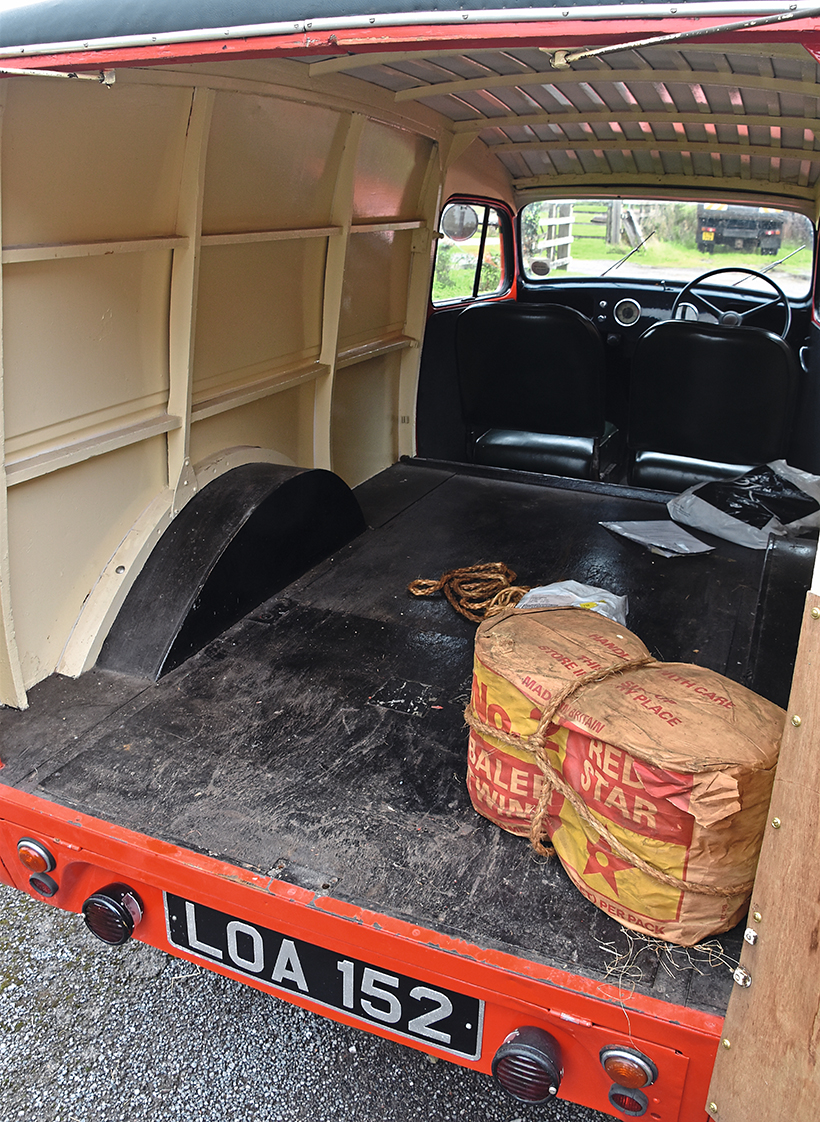
The cargo area was reasonable by 1940’s standards, although the wheel arches cut down on available space.
Although the PC was basically a pre-WW2 design, Bedford ran adverts praising the van’s ‘shapely lines, smart frontal appearance and neat finish.’ Small businesses were keen on the PC, which was quick off the mark by 1940s standards. It was also good value at a purchase price of £300. Many light commercials were exported to help with the British economy, and some PC vans found their way ‘Down Under’ in kit form where they were developed by the Australian General Motors subsidiary, Holden.
Mike was attracted to the van when he started collecting farm machinery made by a Welsh firm called Jones Balers. He discovered that the company had used a Bedford PC as a service vehicle. “It all started in the late 1960s,” he recalls. “I wanted something I could afford to take to rallies, and some friends had several pieces of equipment including a Jones static baler. I was impressed with the machine and have been hooked ever since.”
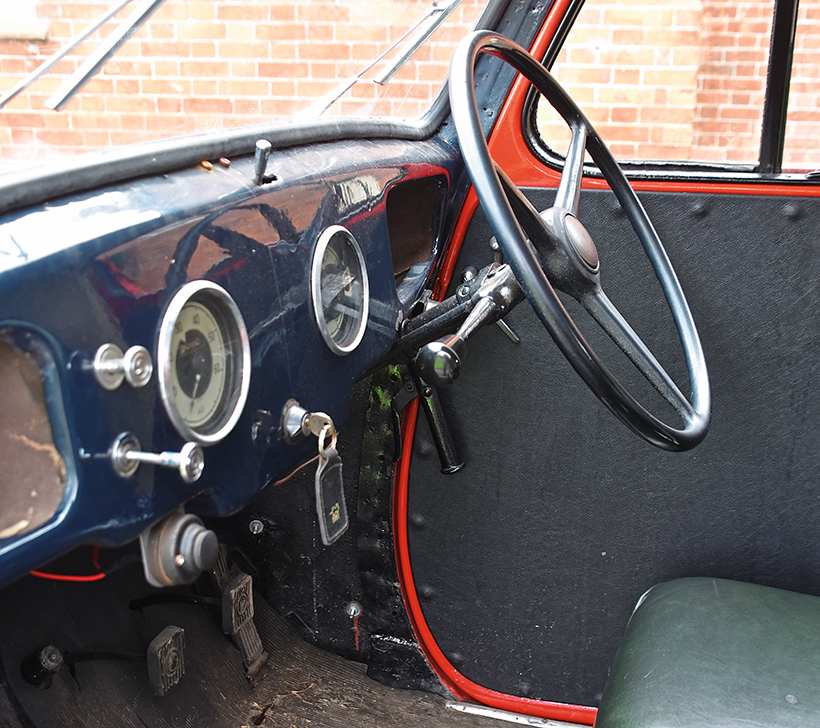
The PC was fitted with a column shift as against the traditional floor-mounted lever.
Jones Balers was the brainchild of two farming brothers David and Glynne, who were based in North Wales. They started a contracting business in the early 1920s, which eventually evolved into Jones Balers. Agricultural equipment was scarce between the two world wars, and the brothers started to experiment with their own designs using other machinery as a blueprint. They managed to build their own baler, which they used in their contracting business. The word soon got around, and other contractors expressed an interest. The baler was in such demand, that the brothers began making them on a full-time basis.
The brothers built a new factory in Mold, Flintshire. They went on to design the world’s first self-propelled baler and were a market leader in their field. Apart from balers they designed a range of other farming machinery, including combine harvesters. By autumn 1961, Jones Balers had gained a world-wide reputation. This attracted interest from the firm’s competitors, and they were bought out by the American company Allis-Chalmers.
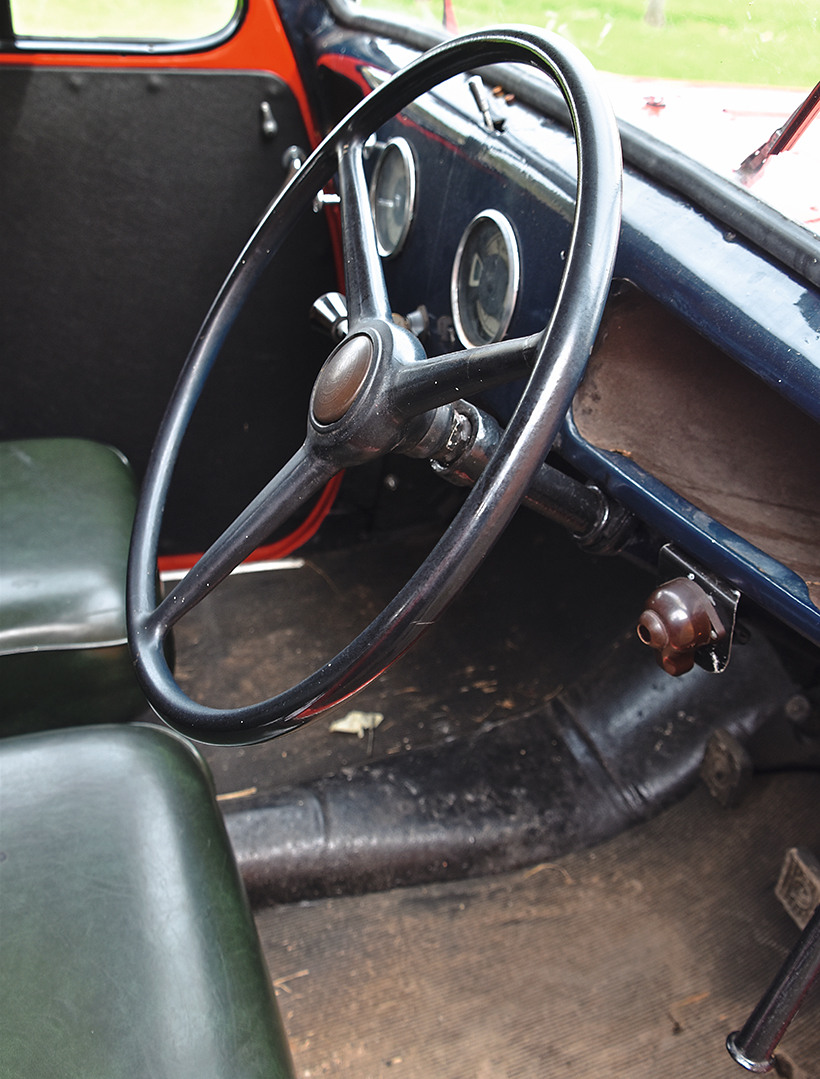
Post-WW2 van cabs were not known for their comfort and could get quite warm during the summer weather. Heaters for the winter were normally an optional extra.
This change of ownership met with mixed success, and there were further re-organisations in 1971, when Allis Chalmers sold off the company to Bamfords of Uttoxeter. The 1970s were difficult years for agricultural machinery manufacturers, and the Mold factory was forced to close in 1980. Fortunately, the interest in Jones Balers is still strong, thanks to the effort of enthusiasts like Mike.
Mike was already aware of the Welsh brand because he remembered seeing an agricultural contractor working with a Jones bailer when he was just a boy. The contractor baled hay on his uncle’s farm, and other holdings in the area. Mike would follow him on his bicycle and watch him at work. “What started off as a chance encounter, gradually became a bit of an obsession,” he admits. He has been collecting Jones Balers now for several years and owns one of the largest collections in the UK.
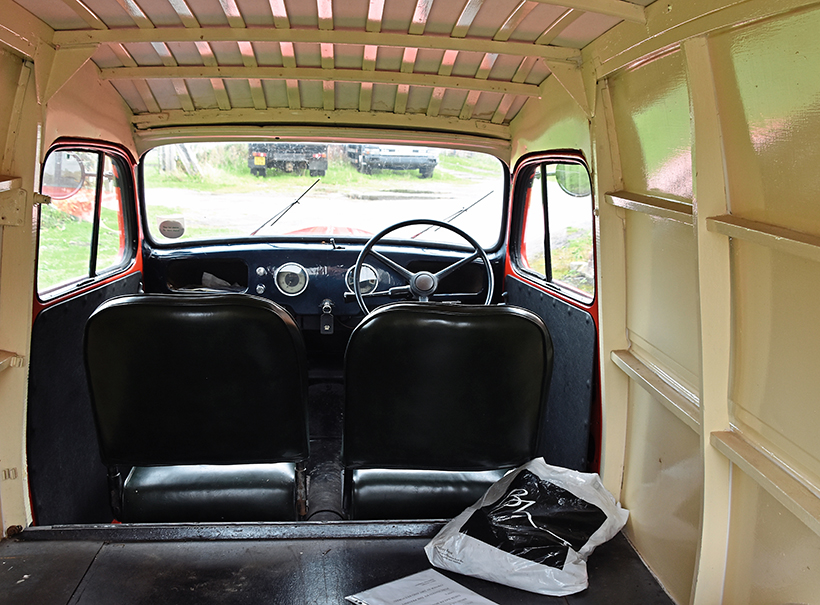
By now, Mike was also into commercial vehicles, thanks to his heavy haulage company. “Looking back I suppose I drifted into haulage,” he says. “At the time I wasn’t really keen on lorries, and all I had to my name was £75 and an old Jaguar XK 140. These cars are worth a lot of money now, but back in the 1960s they didn’t attract a lot of interest.”
Mike worked for the local electricity board from 1964 to 1970 and was looking for something to do in his spare time. “A friend of mine had an old Guy Otter he was looking to move on, and in the end I did a swap with the Jaguar,” he recalls. “This might seem a strange transaction in today’s market, but the lorry was a working vehicle whereas the car was just a hobby. I occasionally do slide talks for local clubs and highlight what a restored Jaguar XK140 would fetch now, compared to a Guy lorry! They have both risen in value, but by vastly different amounts.”
Depending on condition the Jaguar would probably win hands down, but at least the move gave Mike his first step on the haulage ladder. “My first job was hauling an old John Deere crawler equipped with a front bucket for a local contact,” he said. “It was all part-time work at this stage, mainly during weekends and evenings.”
Mike then got more ambitious and acquired a low-loader, which he used to transport a friend’s traction engine to rallies. Steam engines are heavy machines, and his services were required most weekends during the summer months. “I then decided to leave the electricity board and start working for myself,” he explained. “I was fortunate because they had just changed the terms of the carrier’s license, so it was a lot easier to get haulage jobs. The authorities were also building the new M5 motorway right outside my front door, and low-loaders were in big demand.”

Vans led a hard life and the Bedford PC was no exception. Few models have survived and rarely turn up for sale, or on the rally field.
Mike started to get a lot of work and within two years was the proud owner of a new Scania lorry. “I probably had seven tractor units and an assortment of trailers when the business was at its peak,” Mike said. “We were hauling all types of different loads up to a gross weight of 150 tonnes, and one of our special items was old steam locomotives. The railway heritage movement was becoming popular, and we were kept busy.”
Despite a heavy workload, Mike also decided to take up tractor pulling in his spare time. Tractor pulling has been called the “world’s most powerful motor sport” with some machines producing in excess of 9,000 horsepower. “Some friends of mine got involved in the hobby,” he recalls. “They did not have any suitable transport for hauling their modified tractor, so I lent them a low-loader and went along to a few meetings. One thing led to another, and the next thing I knew I had cannibalised one of my old tractors and was taking part in a competition.”
Mike became quite good on the track and in the 1980s, won some British and European championships. “I remember going to Sweden twice for the European events, which was quite an experience,” he recalls. Once he had stepped back from tractor pulling, Mike became more involved with his agricultural machinery collection. The working days was another good idea, as it offered him the opportunity to raise money for local charities. Apart from his passion for Jones Balers, he was also on the look-out for a Bedford PC van.
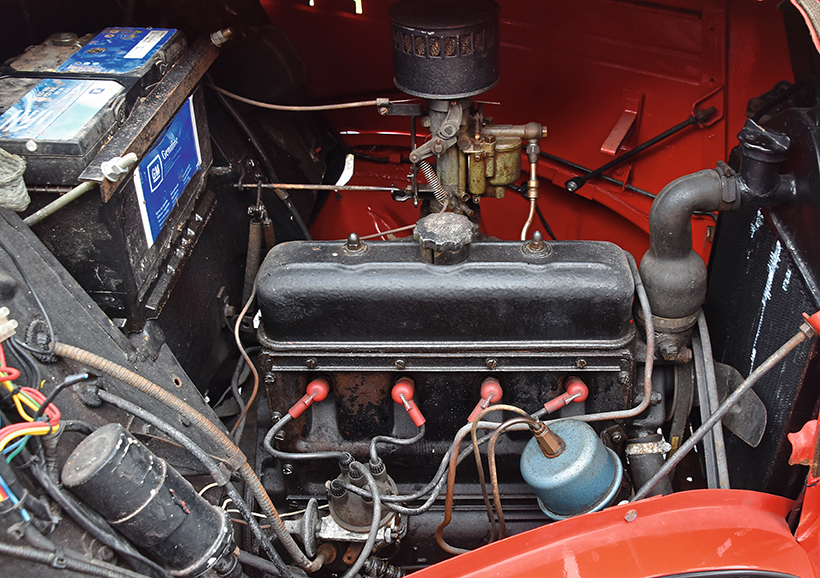
Car engines in low-compression format, were often used to power light commercials.
“When I was doing some research about Jones Balers I found out that their first service van was a second-hand Bedford PC first registered in the Birmingham area,” he explained. “In 2009 I managed to track down a PC in Dorset. It was painted blue and had last been used commercially as a builder’s van. There was a flap in the back, where a ladder would have been stored. The previous owners had given the van a bit of makeover, but it still needed a lot of work.”
Mike arranged to have the van delivered back to Somerset and decided to give the Bedford a proper restoration. “The Bedford was sound mechanically, although there were a few issues with the carburettor,” he recalls. “The van had been standing around for several years, which certainly didn’t help the bodywork. The previous owners had done some repairs to the roof, but there were still a few issues. I managed to get hold of a local Bedford enthusiast who was familiar with the model PC, and he sorted out the problem. I also gave the van a fresh coat of red paint.”
Mike had seen photographs of the Jones Baler PC and had spotted an unusual omission with the van’s livery. “I discovered that Jones never bothered painting a phone number on the side of their vans, so they must have been confident that customers knew where their depot was located,” he said. “Apparently, they kept the PC for several years, before trading it in for one of the new Bedford CAs. The trail gets a bit cold after that, but for all I know LOA 152 could be the very same van!”
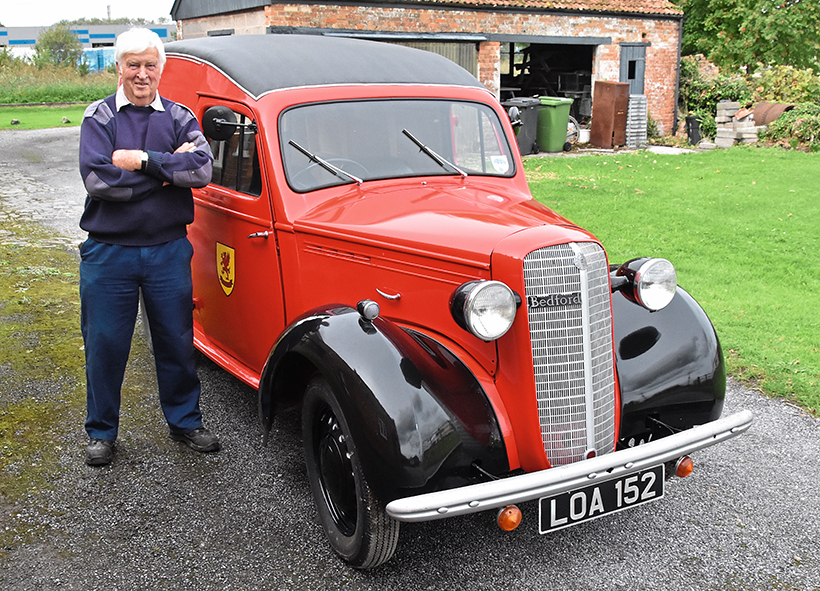
Mike Lawrence is not only a collector but also a man of many talents!
Mike has shown the van at local rallies, and it also has a prominent role to play during his popular working days. “The van follows the balers around, just like it would have done in the old days,” he said. “The PC would have had its work cut out, particularly during the harvest. This was probably the busiest time in the farming calendar, and it was all hands to the pump.”
I was interested in Mike’s opinion of what it’s like sitting behind the Bedford’s steering wheel. “I think this generation of vans looks a lot better than they actually drive, but they can still get you from A to B,” he smiled. “The van is obviously underpowered by today’s standards but is quite happy pottering around the local lanes. I understand there are not many PCs left, and I intend keeping the vehicle for the foreseeable future.”
This feature comes from the latest issue of Heritage Commercials, and you can get a money-saving subscription to this magazine simply by clicking HERE
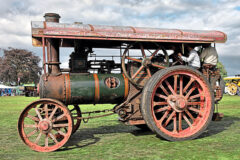
Previous Post
1919 Rushton Proctor traction engine reappears
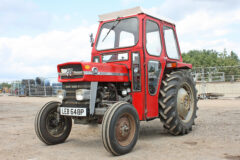
Next Post
Massey Ferguson 135 Quick-Detach cab



